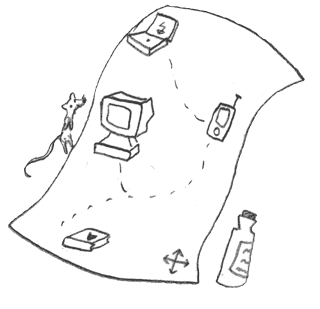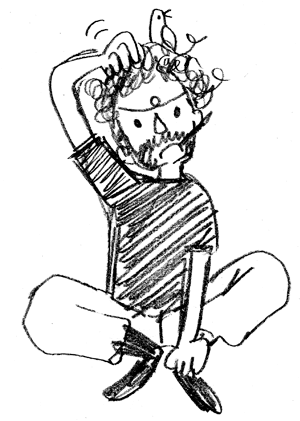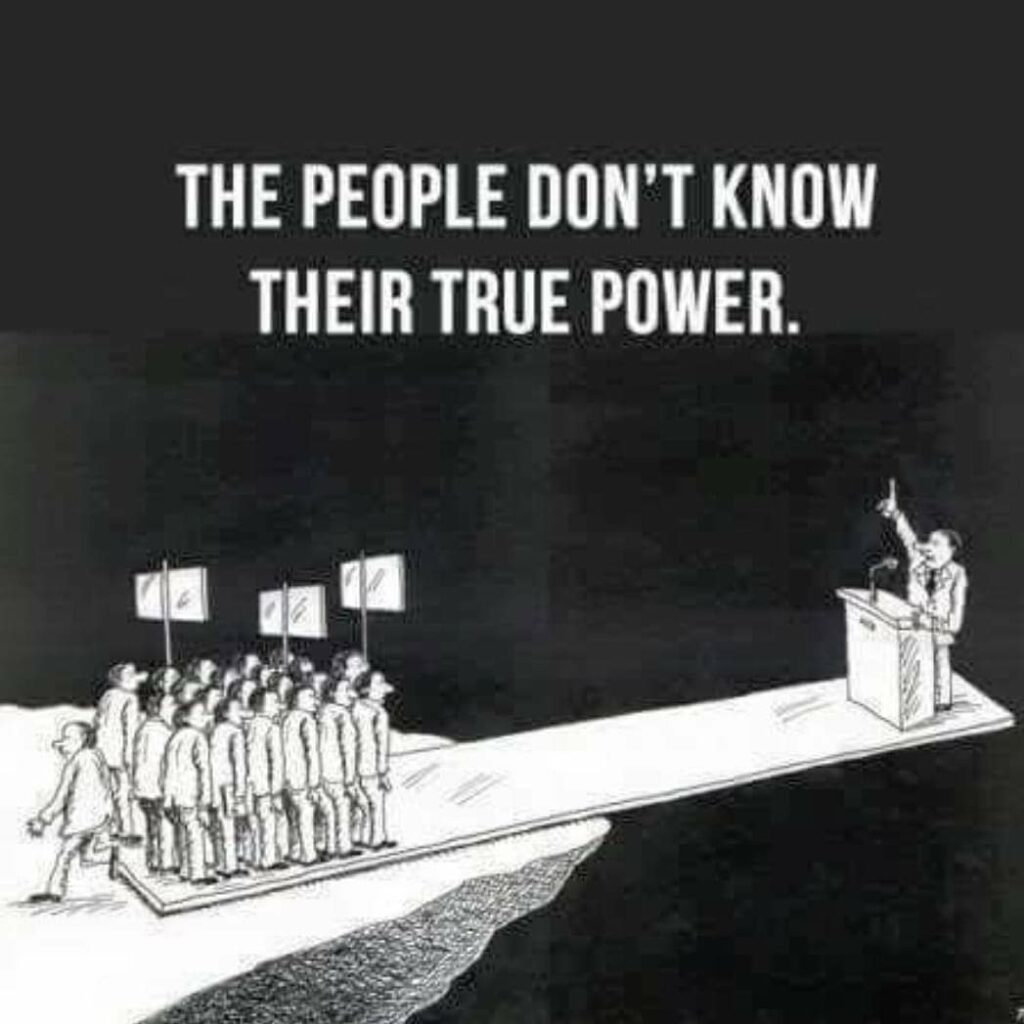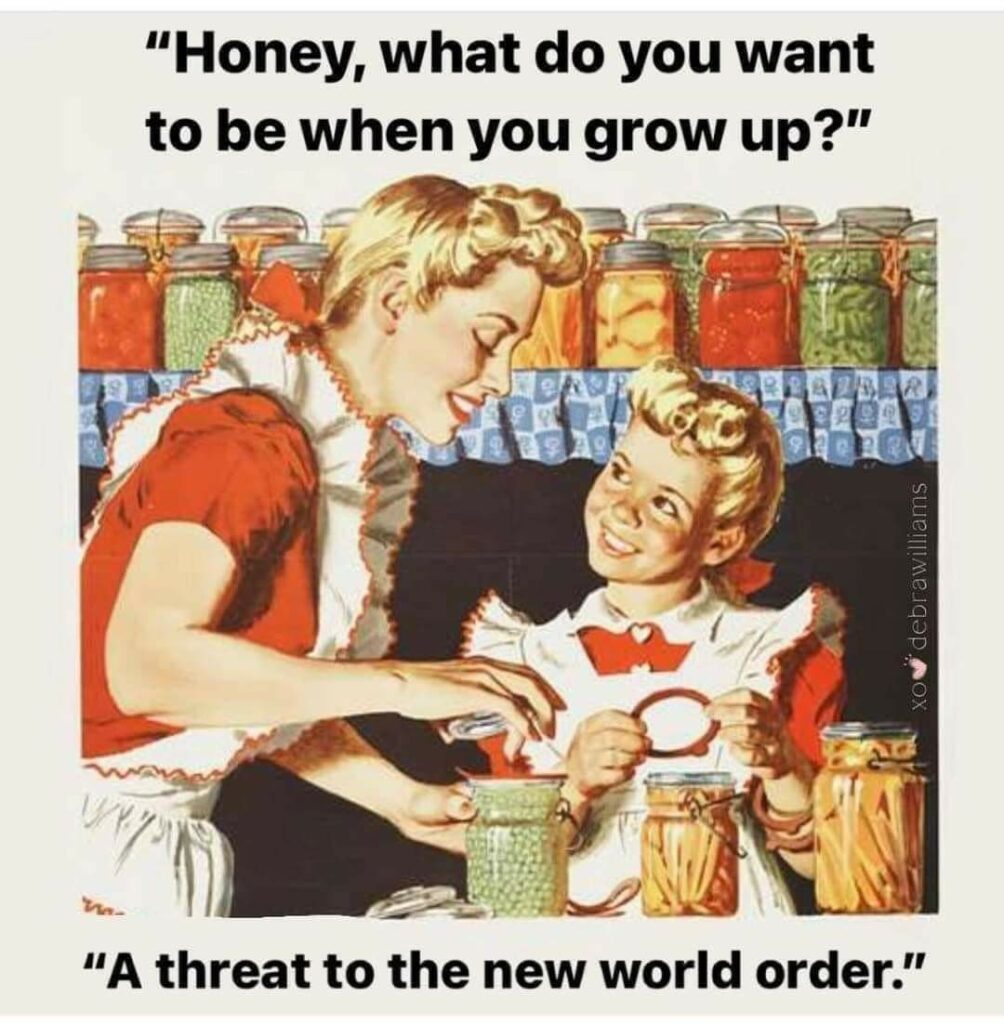Forty years of hard indoctrination doesn’t just fade away. It has to be dug up, held in our hands, recognised for what it is, and composted. If we don’t do this, we have no hope – none – of moving away from the accelerating mess that’s already killing millions and is on track to kill billions. Hobbes’ “nasty, brutish and short” isn’t a warning anymore; it’s a weather report.
Mainstream thinking feels normal because we’ve lived inside it for a generation and a half. But “normal” is a trick. Normal is the smell of rot covered with flowers. Normal is the daily worship of the #deathcult: competition as virtue, greed as destiny, extraction as progress, (stupid)individualism as freedom. Normal is the mess of walking around in a toxic story and calling it common sense.
A useful social activism path is to make this “common sense” story feel dirty, polluted, contaminated. Because it is, everything we touch – our institutions, our media, our language – is soaked in the residue of #neoliberalism. The indoctrination runs deep enough that we police ourselves long before any authority needs to step in. We repeat the slogans: There is no alternative. Don’t be unrealistic. Be responsible. Trust the experts. Let the market decide.
And that’s why we need to dig, turn over the dead soil so something else can grow. We need to break the spell and remind people that doubt, imagination, and collective action used to be normal too, before they were systematically stripped away.
Composting isn’t about purity or escape, it’s about transformation. Taking the poisoned narratives, breaking them down, mixing them with lived experience, adding the oxygen of open discourse, and letting something organic and grounded emerge. Something native, that belongs to us.
The #OMN, the #openweb, the #fediverse, grassroots media – these aren’t personal hobbies. They’re the tools we use to use, and can use agen to compost forty years of damage, to open spaces where new stories can sprout. To let people speak without being filtered through corporate interests and #NGO gatekeeping, rebuilding trust, messiness, solidarity, and actual democracy.

Because the mainstream isn’t just wrong – it’s killing us. And the longer we pretend it’s clean, the faster the rot spreads. Its past time to get our hands dirty, time to compost the #deathcult to grow something worth living in.

If you’re looking to do affective activism – activism that moves people, shifts culture, and builds real change – then you need to start from lived reality, not from academic distance.
The academic histories of our movements aren’t useless, but they are strongly second-hand and often shaped by #fashernista thinking: polished narratives, fashionable theory, safely detached accounts. They smooth over the mess, the conflict, the creativity, the failures, everything that actually matters when you’re trying to build power from below.
What we do need are more minority views from the people who were there. Not just the dominant stories, not just the tidy retellings, but the perspectives that expose the actual tensions inside our organising:
open vs closed
process vs control
serendipity vs bureaucracy
These are the real power that shaped our victories and our collapses. Take #indymedia. From my experience, it began open, horizontal, serendipitous – messy in all the productive ways. And it died closed, formal, bureaucratic – captured by the very forms it was created to resist. This is not a critique of individuals; it’s a plain, structural story. And it’s the kind of story we must use if we want to reboot anything today.
This is exactly why we have the #4opens: openness of code, data, process, and community. It’s a simple but powerful way to mediate these recurring problems. It keeps us grounded in transparency rather than personality, in shared pathways rather than gatekeeping, in public good rather than private control.
If any of this reads like a personal criticism, it isn’t. It’s a reminder that the future depends on honest memory, not sanitised mythology. To build the next wave – #OMN, #openweb, new grassroots media – we need our own histories, told by us, in our own messy, contradictory, living voices. That’s the compost the next movement grows from.






